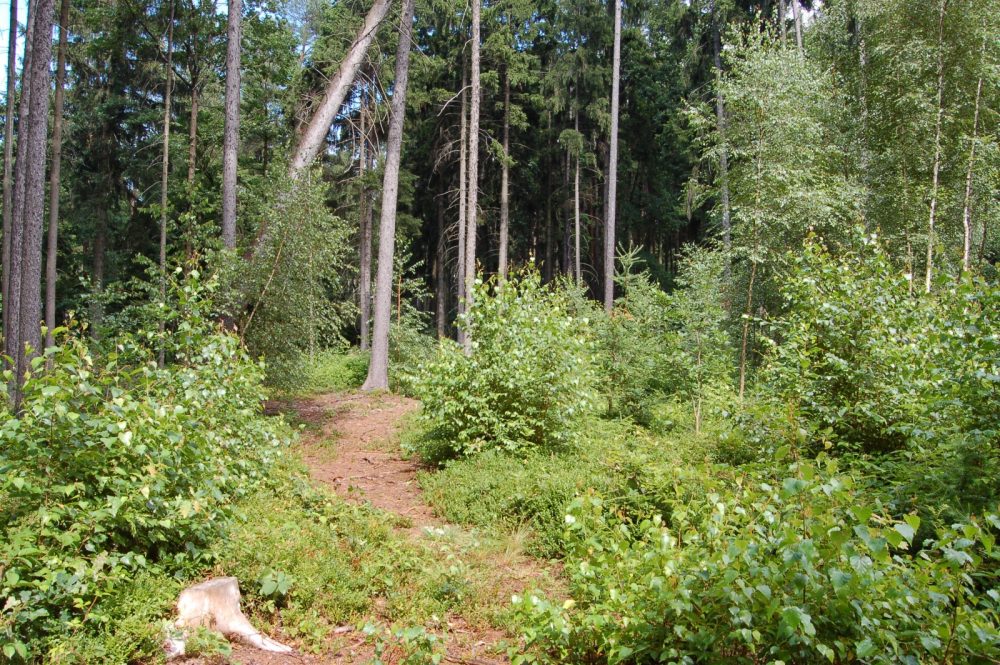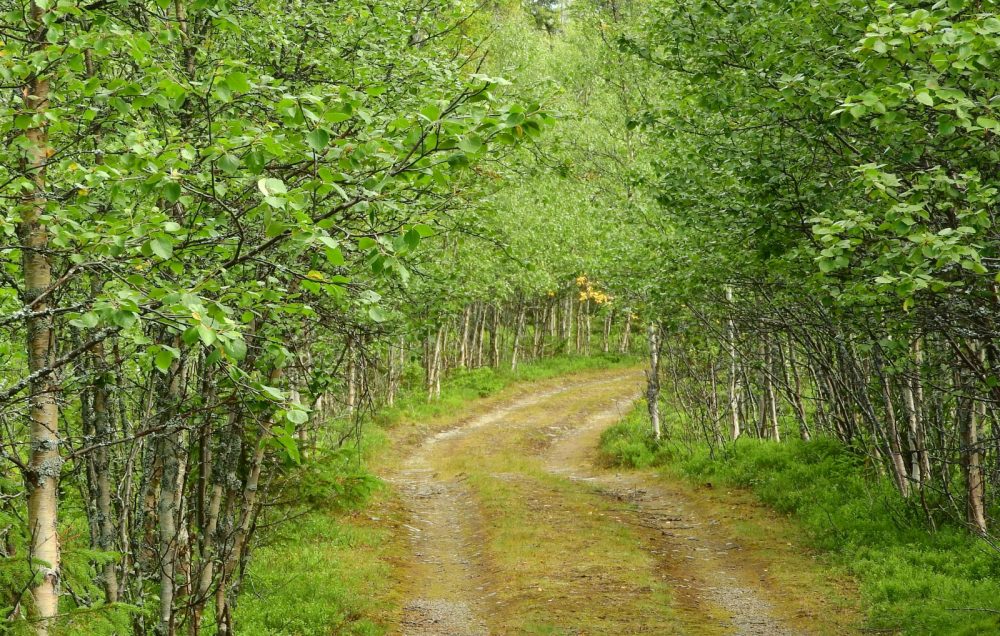Beech versus birch, comparison of their growth on the clearcuts
Not only foresters are afraid that the current extinction and large-scale decay of Norway spruce stands will lead to the loss of many of the production and non-production effects that these forests have provided so far. Therefore, experts agree on the need to quickly start the restoration of forests on the clearings, although by different ways. Scientists and foresters discuss various methods, such ones as the use of pioneer trees, two-phase restoration, group restoration, planting with lower hectares, etc.
For more detailed information on the issues addressed, see the abbreviated Summary of the paper “Comparison of growth and above-ground biomass of young beech and birch stand growing on disturbed area after allochthonous Norway spruce stand” (Martiník et al, 2022):
 Compared to shade-tolerant climax species such as European beech, pioneer species are better-adapted to large clearing conditions; they grow fast in full sunlight, and juvenile plants are also tolerant to climatic extremes. Among the pioneers, silver birch is a dominant tree species that regenerates spontaneously on disturbed areas in central Europe, whereas beech must be planted if it was not present in ground vegetation before the wind throw. Despite that, beech is used for reforestation of clearings more often than silver birch in the Czech Republic.
Compared to shade-tolerant climax species such as European beech, pioneer species are better-adapted to large clearing conditions; they grow fast in full sunlight, and juvenile plants are also tolerant to climatic extremes. Among the pioneers, silver birch is a dominant tree species that regenerates spontaneously on disturbed areas in central Europe, whereas beech must be planted if it was not present in ground vegetation before the wind throw. Despite that, beech is used for reforestation of clearings more often than silver birch in the Czech Republic.
This work deals with amount of aboveground biomass and one-year increment of the biomass in 9-year-old birch and beech stands on a former clearing; the stands were measured in 2019. Before calamity, the site was dominated by 100-year-old spruce stand with admixture of silver birch, Scots pine and European larch single trees. Three regeneration treatments such as (i) artificial planting of beech and spruce, (ii) birch seeding and (iii) succession after leaving the part of site with no human intervention were established within 1.5-hectare clearing. In this experiment, we focused on (i) and (iii) treatments with planted beech and dominant silver birch respectively.
 Presence of trees, height of beech and diameter at breast height (DBH) of birch were measured in spring (eight-year-old) and late summer 2019 (nine-year-old). To estimate aboveground biomass of the beech and birch treatment, allometric equations based on the data of the sample trees were used. Ten representative trees of birch and beech were sampled in summer 2019. Additionally, nine more silver birch trees with no foliage were felled in autumn 2019. Sample trees were transported to laboratory, where particular compartments such as stem, branches, and leaves were separated and then dried at 80°C until constant weight. For both treatments, total above ground biomass (TB), total woody biomass (TWB), current wood biomass increment (CWI) and average wood and total biomass increment (AWI, TAI) were calculated.
Presence of trees, height of beech and diameter at breast height (DBH) of birch were measured in spring (eight-year-old) and late summer 2019 (nine-year-old). To estimate aboveground biomass of the beech and birch treatment, allometric equations based on the data of the sample trees were used. Ten representative trees of birch and beech were sampled in summer 2019. Additionally, nine more silver birch trees with no foliage were felled in autumn 2019. Sample trees were transported to laboratory, where particular compartments such as stem, branches, and leaves were separated and then dried at 80°C until constant weight. For both treatments, total above ground biomass (TB), total woody biomass (TWB), current wood biomass increment (CWI) and average wood and total biomass increment (AWI, TAI) were calculated.
Only 47% and 46% of 10,000 initially planted beeches was found in the time of measurement. At the same time, density of birch in succession treatment was 10,900 plants.ha-1. Dominant height of birch stand was about 8 m, whereas that one of planted beech was under 3 m. Estimated total aboveground biomass of birch stand ranged from 18 to 26.8 t.ha-1 during observed period. At the end of growing season, total aboveground biomass was 89% stem with branches – i.e. 23.9 t.ha-1. The volume of CWI of birch stands was 5.95 t.ha-1 per year, TAI was 2.98 and AWI increment ranged from 2.66 to 3 t.ha-1 per year. Contrary to the birch stand, volume of the total beech aboveground biomass ranged from 0.5 to 0.8 t.ha-1, only. Also, volume of biomass increment of beech stand was negligible compared to birch stand as it ranged from 0.06 to 0.16 t.ha-1. The volume of aboveground wood biomass of birch stands strongly correlated with basal area.
In addition to production function, the more biomass produced, the more carbon sequestered. Hence, birch stand proved to be more beneficial than planted beech. It can be concluded that use of succession at post-disturbance sites where pioneer species such as birch readily regenerate is both ecologically and economically sound.
The paper “Comparison of growth and above-ground biomass of young beech and birch stand growing on disturbed area after allochthonous Norway spruce stand” can be downloaded here:
Authors of the paper: Antonín Martiník, Matúš Sendecký, Marcela Smejkalová, Mendel University in Brno, Faculty of Forestry and Wood Technology, Department of Forest Establishment and Cultivation, e-mail: antonin.martinik@mendelu.cz
Prepared with use of abbreviated Summary of paper by: Ing. Jan Řezáč, VÚLHM, v. V. I., E-mail: rezac@vulhm.cz
Illustration photo: use of birch, beech and spruce in forest regeneration, VÚLHM archive
